




| Dicyrtomina saundersi (Lubbock, 1862) |





|
|
Scientific name: Dicyrtomina saundersi (Lubbock, 1862) Common name: French name: Phylum: Arthropoda Class: Collembola Order: Symphypleona Family: Dicyrtomidae Size: 2-3 mm. Habitat: In damp places, under rocks, under logs, in the litter, often on the underside of dead leaves. Food: Decaying plant and animal materials Reproduction: Males deposit spermatophores (small capsules containing spermatozoa and attached to the substrate by a small peduncle) which are then collected by the females. Geographic area: Palaearctic region. |
Springtails of the Dicyrtomidae family shows a globulous body and eight ocelli on each side of the head, grouped to form a black spot. The antennae have 4 articles. The last one is very short. They can perform spectacular jumps using their furca under the tip of their abdomen. Dicyrtomina saundersi is a pale yellow to green colour marbled and marked with reddish brown. There are also darker forms which are more dark reddish brown. The two main identification criteria on picture for this species are the clear change of colour, from pale to dark, between articles 2 and 3 of the antennae, that's to say about at half the total length, and the multi-barred cross marking with irregular bar lengths at the rear of the abdomen. These criteria are much more difficult to evaluate on dark specimens. Dicyrtomina ornata shows uniformly coloured antennae and a more solid patch (rather a square shape) at the rear of the abdomen. Not everybody agrees on the fact that this is a separate species. Dicyrtomina saundersi is mainly observed from October to May. |
| [To know more about the Dicyrtomina saundersi] [Next picture] [Top] |
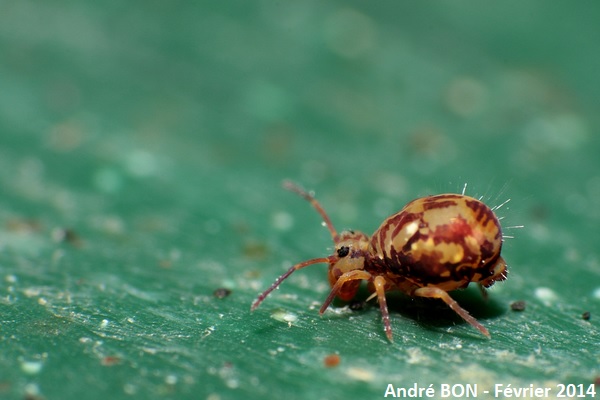
|
The underside of the cover of the compost tank allows me to observe Dicyrtomina saundersi throughout the winter. The small size of these springtails makes it difficult to shoot pictures. In order to get a correct magnification I have used a 24mm lens, mounted the reverse way and with the aperture blocked at F/10. This aperture is a trade-off to increase the depth of field while keeping enough light through the viewfinder of the DSLR camera. The use of flash light is mandatory. |
| [To know more about the Dicyrtomina saundersi] [Next picture] [Previous picture] [Top] |
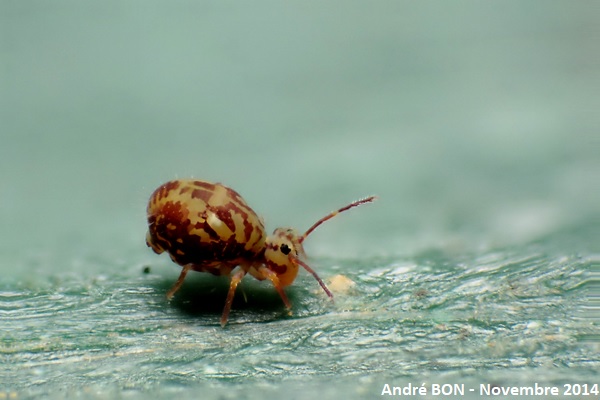
|
In order to increase the depth of field on these high-magnification pictures I have started to use the "focus stacking" method. This picture is the merge of 9 shots each with a small focus shift. I have used the CombineZP software which has kept the sharp areas of each shot. You need then to make some manual corrections to remove the artefacts. |
| [To know more about the Dicyrtomina saundersi] [Next picture] [Previous picture] [Top] |
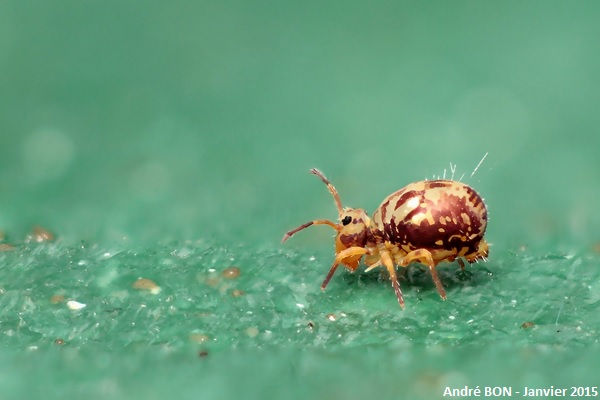
|
This picture is the merge of 12 shots each with a small focus shift. All is not yet perfect but I am getting better results. The key is to find a cooperative subject which stays immobile during enough time. |
| [To know more about the Dicyrtomina saundersi] [Next picture] [Previous picture] [Top] |
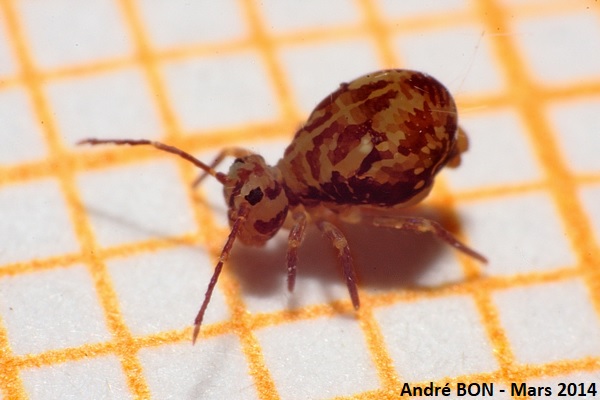
|
Here is one picture on graph paper to show the small size of the springtail, here about 2.2 mm. |
| [To know more about the Dicyrtomina saundersi] [Previous picture] [Top] |
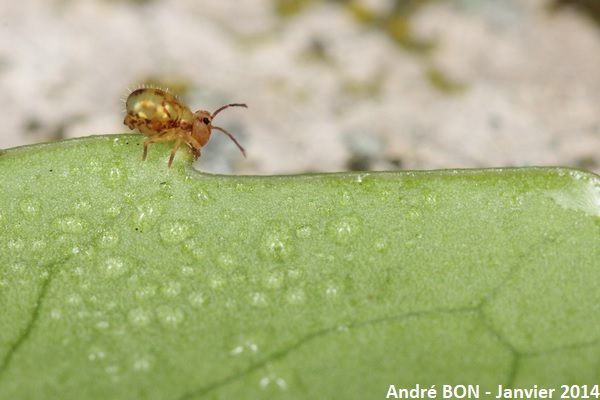
|
I have tried some pictures with another support that the plastic cover of the compost tank. This is not an easy task and you need to forget high magnification factors as soon as the subject moves. I have shot this picture with a 100mm lens and extension tubes. |